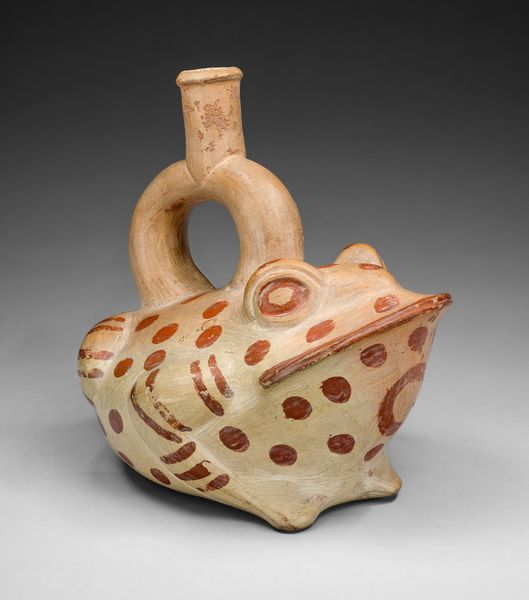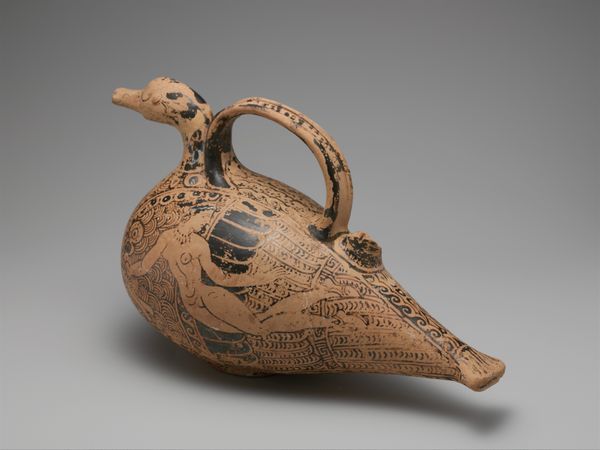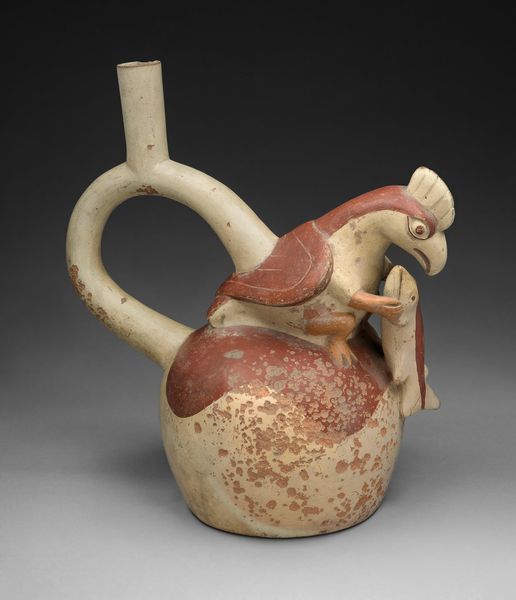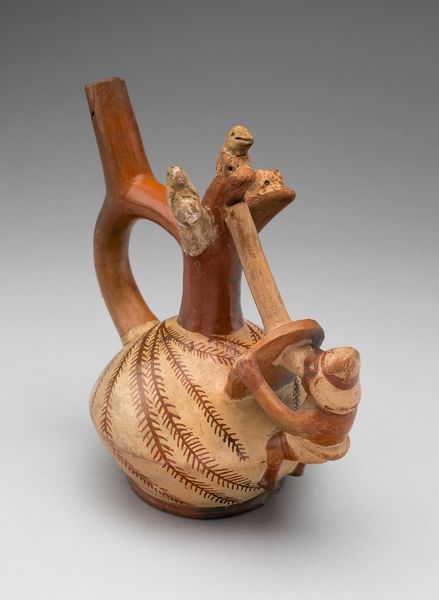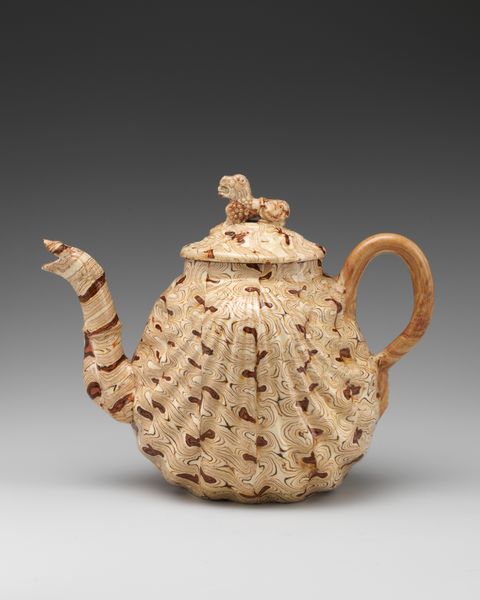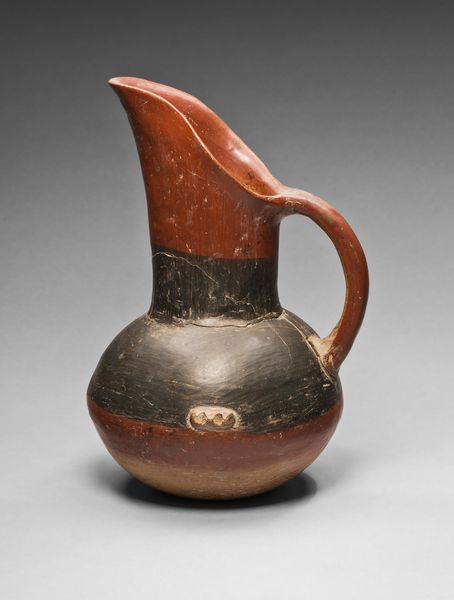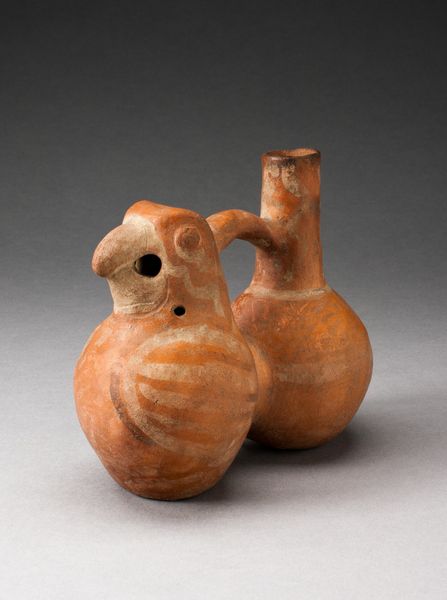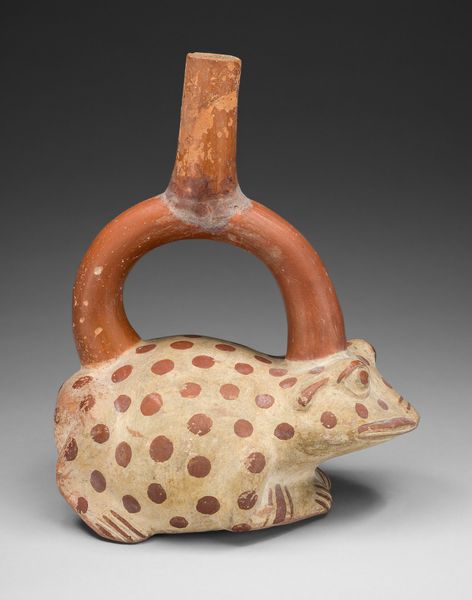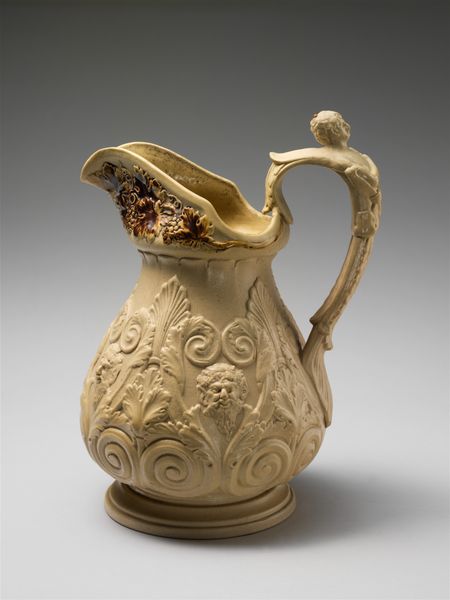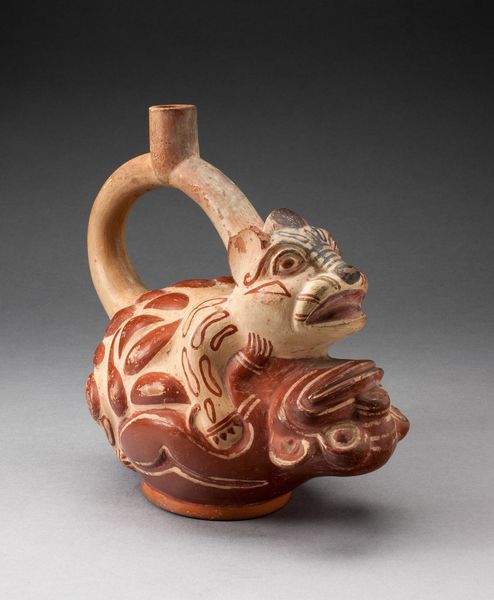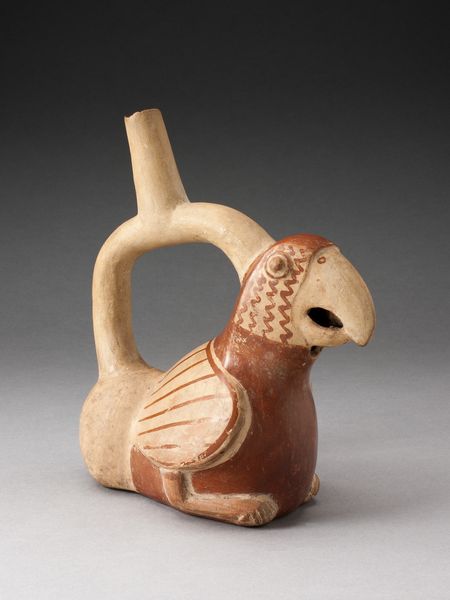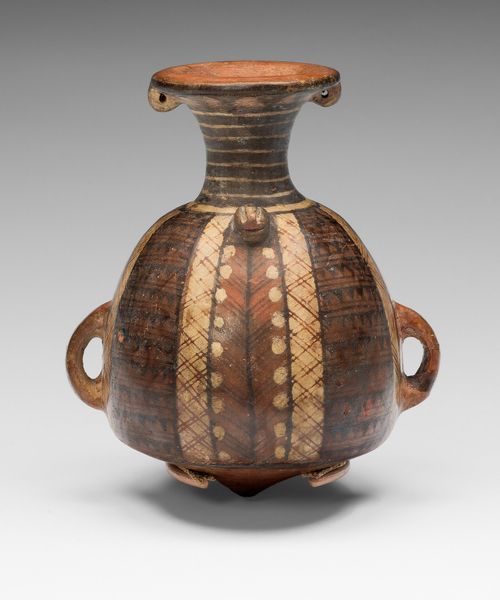
ceramic
#
ceramic
#
figuration
#
indigenous-americas
Dimensions: 7 1/8 x 8 3/8 x 4 3/8 in. (18.1 x 21.27 x 11.11 cm)
Copyright: Public Domain
Curator: This charming piece is titled "Vessel in the form of a Duck," crafted by the Moche people sometime between 1 and 800 AD. It's a ceramic vessel adorned with pigment. The Indigenous Americas certainly had unique artmaking practices. Editor: It's wonderfully understated, isn’t it? A rounded form covered in pigment—those dark spots, the horizontal lines on the wing… a tangible example of how labor shapes raw materials, speaking volumes about the social structures behind its creation. Curator: Absolutely. I’m drawn to the duck's symbolism within Moche culture. We know that ducks often represented intermediaries between worlds, and vessels played a critical role in ritual and everyday life. Considering that the piece has themes of erotic art, I am fascinated with the intersections of sexuality, the body, and nature it evokes. Editor: Moche ceramics are really about materiality. I see clay transformed by skilled hands. Think of the work to refine that ceramic, apply those precisely rendered decorations— it really speaks of societal value placed on the vessel itself. Curator: Do you think it hints at ideas around status and identity within the community that made it? The vessel, with its fine details, may have signified an elite connection to natural or supernatural powers, given the society’s hierarchical nature. Editor: Perhaps, or the meticulous process could also reflect deeply embedded craft traditions rather than exclusively status display. Looking closely at the vessel's spout and the duck’s bill, I consider the tools, the firing process and who controlled those resources. Curator: Fair point. But to what extent were those craft traditions themselves shaped by hierarchies and power relations? Was the production exclusive and male dominated, reflecting the social structure we believe existed? These material choices might tell us more about control of gender than the process itself. Editor: An interesting interpretation. Seeing the simple rounded form and functional elements, I consider more the everyday lived reality it provided— the rituals, consumption. I'm wary about projecting today’s notions about social roles so definitively on ancient artifacts. Curator: Agreed, projecting present-day constructs would be careless, however, engaging intersectionality when discussing Indigenous Americas creates dialogue we must explore. What new understanding about society do we derive from observing material expressions such as these vessels? Editor: In that light, examining how the duck form relates to Moche ecology and the pigment production is critical. What's wonderful here is how an everyday piece can unlock so much regarding Moche culture through just material observations. Curator: And for me, it's how objects such as this blur those lines and demonstrate indigenous resistance and ways of knowing from historical trauma that resonates deeply today.
Comments
minneapolisinstituteofart almost 2 years ago
⋮
In the high desert of Peru water is very scarce. These ceramics, although made of porous earthenware, are slip coated and highly burnished to reduce loss of water due to evaporation. The spouts on the stirrup handles would also have been stoppered.
Join the conversation
Join millions of artists and users on Artera today and experience the ultimate creative platform.
